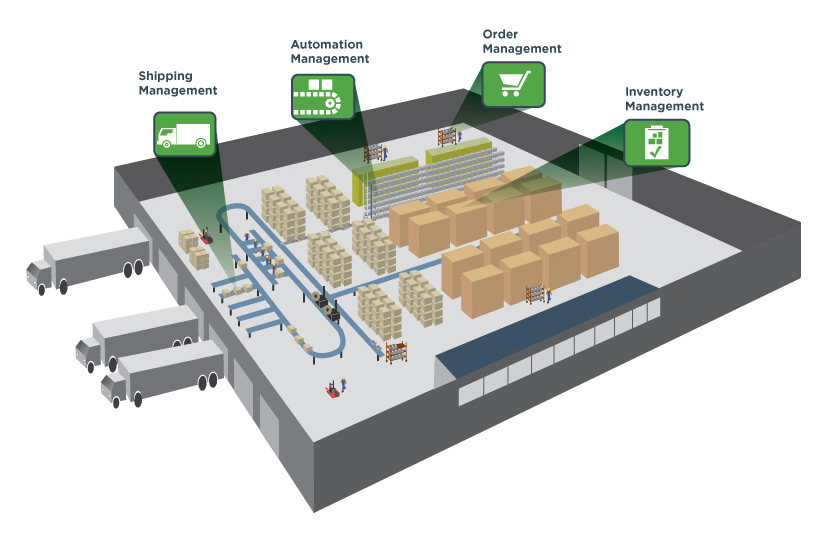4 Questions to Ask Before Upgrading Your Warehouse Execution System (WES)

If you are a supply chain executive or warehouse manager, then you know that your warehouse execution system (WES) is akin to the central nervous system for your entire operation.
Also sometimes called warehouse execution software, your WES coordinates the movement of your inventory, tracks your order management, integrates with your various automation technologies, and may even play a role in your weighing, packing, shipping, and more.
In short, without your warehouse execution system, you know that managing your operation efficiently would be next to impossible.
Need an Expert Opinion?
But for one reason or another, you’ve been wondering if it’s time to think about upgrading your system. Maybe you’ve found your systems haven’t been communicating as consistently as in the past. Maybe you’ve had an increase in imperfect orders, or higher than normal order cycle time. Maybe your existing system is just plain old. Whatever the case, you’re thinking about making a change, and you know that whatever steps you take now have the opportunity to either make or break your operation.
Before you move forward too quickly with upgrading your warehouse execution system, ask yourself the questions below. These questions will help you understand if upgrading your WES will truly address the problem you are experiencing, and will help you create a list of features and functions that a new system should include (if you do, indeed, decide to move forward with an upgrade).
1. Is the problem really the WES?
Often, the desire to upgrade an existing WES or change to a new one comes about because an operation is experiencing a new or exacerbated problem. This could include anything from:
- Increased order cycle time
- Missed delivery windows
- Worsened perfect order percentage
- Etc.
Because the WES is the system responsible for coordinating the movement of everything within your operation, when these problems crop up, it is easy to want to place the blame on the software. But the truth is, there are countless potential explanations for why a particular KPI may be slipping that have nothing to do with your warehouse execution system.
For this reason, before committing to upgrading or changing your WES, you need to be certain that doing so will indeed address the problem you hope it will address. This answer will best be found with a full evaluation of your operation’s workflows and processes.
2. What are the biggest complaints with your existing WES?
If you’ve determined that the problems you are facing do in fact stem from your WES, or you are considering upgrading your existing system because it is outdated, then it makes sense to begin comparing your options.
But before you begin looking at different systems, you should create a list of complaints that you have with your existing system. Doing so will help you frame the selection criteria when you are comparing your options. Some common complaints often fall within categories of:
- The existing WES simply doesn’t perform the way that you need or expect it to
- The existing WES lacks key functionalities
- The existing WES doesn’t integrate well with all of your other systems and technology (a special concern when a WES predates other technologies in a warehouse or facility)
3. What new features or functions should a replacement WES have that your existing system does not?
Outlining your complaints with your existing WES helps you frame your thinking around what you hope to find in a new software or system. Use the issues that you’ve outlined above to create a list of functions or features that a new WES would ideally include.
Unfortunately, it is somewhat unlikely that any particular WES will be able to provide all of the functions and features on your list right out of the box. To make comparing different WES options easier, break out these functions/features into two separate lists: “Must-haves” and “Nice-to-haves.” The list of “Must-haves” will make it easy for you to quickly thin out your list of options so that you are only comparing solutions that can do what you need them to do; the list of “Nice-to-haves” can then be used create a final decision.
4. Are there any other major projects in the plans for your operation?
Before you upgrade or change your WES, it is important to understand whether or not there are any other major projects or initiatives currently being planned or considered for your operation or facility, because some of these additional projects/initiatives may impact the desired functionality of a new system. This may include:
- A desire to bring in new automation technologies such as AS/RS, sortation, or robotics
- A change in IT infrastructure
- A change in general operations
- A diversification from single-channel into omni-channel fulfillment
The Bottom Line
If the problems you are experiencing do in fact lie with your existing WES, then choosing the right replacement system will be critical to the success of your operation. If the issue lies in a different part of your business, however, then the answer will be to ensure you are addressing the root cause and not making an unnecessary change to your WES. Regardless, a trusted systems integrator or warehouse design consultant can help you understand your options and choose the best path for moving forward.






